More Than a Battlefield: Why Gettysburg Should be on Your Bucket List
Gettysburg is often called the most famous small town in America because it was the site of the greatest military clash of the American Civil War. Union and Confederate forces fought fiercely over three days (July 1-3, 1863), suffering more than 51,000 casualties.
The battle is famously called the "high-water mark" of the Confederacy.
Four months later, President Abraham Lincoln traveled to Gettysburg to commemorate the sacrifice of "those who here gave their lives." His Gettysburg Address--memorized by school children over the ages--became the most famous speech delivered by an American president.
The battle and Lincoln's speech alone explain why more than a million people each year visit a small Pennsylvania borough nestled along the Appalachian Mountains. It's why 22,000 "Friends of Gettysburg" offer gifts and labor to help the National Park Service preserve the grounds and interpret the battle in perpetuity.
But dig just a little deeper and you'll quickly find out why Gettysburg National Military Park should be on the bucket list of every American.
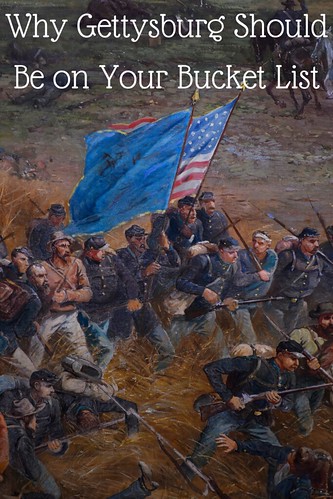
The Park was created to honor the sacrifice of Civil War veterans, but through its sheer scope and significance, encompassing more than 6,000 acres and some 1400 monuments, it honors the veterans of all our wars.
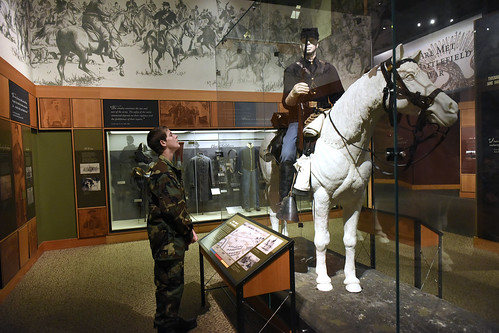
Participant in the Gettysburg Foundation’s Great Task Program for Youth
Gettysburg is also a teaching tool for the issues of our day, such as reconciliation in a deeply divided America. This was exemplified by the reunions of Union and Confederate soldiers that took place at Gettysburg for decades after the battle. The Eternal Light Peace Memorial was erected to symbolize this reconciliation, and dedicated by President Franklin Roosevelt in 1938, on the 75th anniversary of the battle; it became the inspiration for the "eternal flame" that now burns at the grave of President John Kennedy at Arlington National Cemetery. The peace light is a vivid reminder to contemporary Americans that we can rise above our bitter divisions, just as the veterans did who fought here.
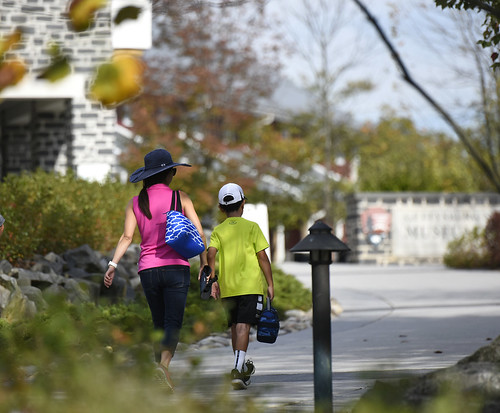
Visitors on the path to the Visitor Center
Related, Gettysburg is a teaching tool for the racial conflicts of our time. Part of the battle was fought over ground occupied by free African-American farmers, who were forced to flee before they would be captured and sent south into slavery. After the battle, African-Americans helped restore the community. A local woman named Lydia Hamilton Smith made daily excursions on a wagon into the countryside, explaining the carnage at Gettysburg and returning with supplies. Racial issues were easily glossed over during veteran reunions, but on the 100th anniversary of the battle, Vice President Lyndon Johnson traveled to Gettysburg to speak about racial injustice in the year before Congress passed the Civil Rights Act of 1964. Gettysburg is a place to reflect upon the state of race relations, ranging from White nationalism to Black Lives Matter.
The death of a young woman named Jennie Wade--killed by a shot while baking biscuits in her sister's house--awakens one's conscience about the innocent victims of violent conflict.
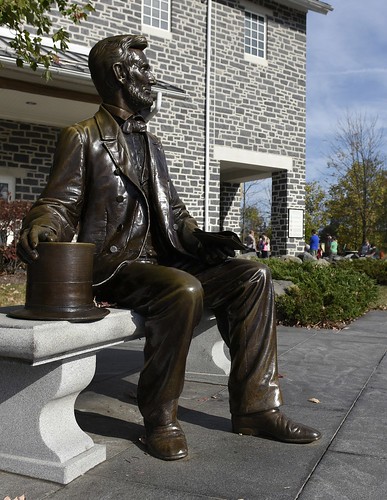
Gettysburg Foundation Lincoln Statue Outside Visitor Center
Gettysburg is a perfect venue to learn about the agriculture, architecture, and medicine of the era; the Spangler Farm near the Park's Museum and Visitor Center was an active field hospital for Union and Confederate wounded alike after the battle. The story of Gettysburg residents, Union surgeons, and Quaker nurses streaming into town to care for injured Confederates is a timeless story of caring and compassion.
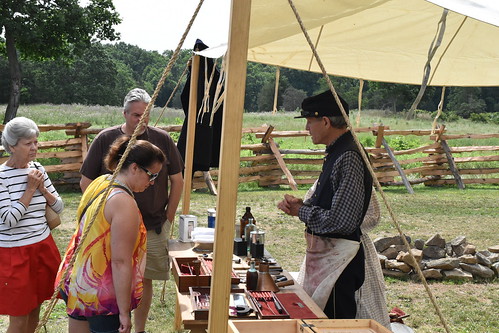
Dr. Jon Willen portrays a Union Civil War Surgeon
Within the Visitor Center, the Gettysburg Cyclorama is a circular painting that is 375 feet long and weighs more than 12 tons! Visitors are surrounded by a classic piece of art even as they experience a sound-and-light show that recreates Pickett's Charge, the final attack in the battle.
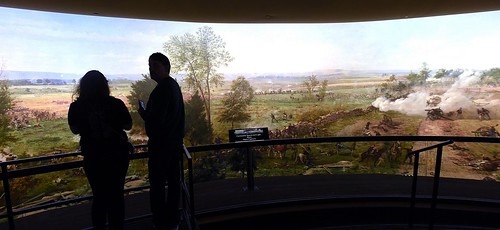
Visitors Experience the Gettysburg Cyclorama
Adjacent to Confederate lines on the battlefield is the Eisenhower National Historic Site, also managed by the National Park Service. The residence of Mamie and Dwight Eisenhower, this historic site symbolizes the efforts of a military hero, turned president and diplomat, to bring about world peace. On his Gettysburg farm, Eisenhower quietly walked around the leaders of the world, such as British Prime Minister Winston Churchill, Secretary Nikita Khrushchev of the Soviet Union, Indian Prime Minister Jawaharlal Nehru, and French President Charles de Gaulle. The Eisenhower farm offers lessons about the importance of mutual understanding.
And Gettysburg is a pastoral land of rolling hills open to all Americans to enjoy. One can learn about sustainability issues through restoration of landscapes, replanting of native orchards, and reduction of invasive plant species through controlled burns. Environmental stewardship graces Park projects and is exemplified in a LEED Gold-Certified Museum and Visitor Center.
Gettysburg's setting has inspired generations of writers and painters and sculptors. Many of the monuments honoring the sacrifices of the soldiers are also beautiful works of art completed by renowned American sculptors. Gutzon Borglum crafted the North Carolina monument honoring the famous "Pickett's Charge" at Gettysburg, for instance, while also finishing the four granite faces of presidents (including Lincoln) carved into Mount Rushmore in South Dakota.
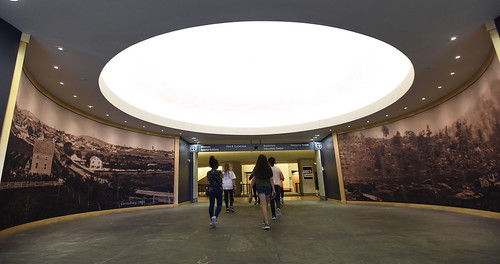
The Rotunda at the Visitor Center
Gettysburg will always be the place of America's most famous battle and presidential speech, now 155 years in the distance. For many Americans, those are indeed reason enough to visit. But for everyone, Gettysburg should be a bucket list item because in few other places in North America will one find within the space of a few square miles, the seamless blend of history with remembrance, science, civility, weaponry, forgiveness, archeology, sustainability, and natural and artistic beauty.
The trick is to let it all sink in while you visit.

General Warren monument looks down from Little Round Top
Learn more:
https://www.gettysburgfoundation.org/visit/plan-your-visit/
Dr. Matthew Moen is President of the Gettysburg Foundation. Before joining the Foundation in 2017, he served fifteen years as dean of the College of Arts & Sciences and Lohre Distinguished Professor at the University of South Dakota; prior to that, he was Professor and Chairperson of the Department of Political Science at the University of Maine. Moen served as president of the New England Political Science Association, as well as the Council of Colleges of Arts & Sciences—the leading national dean's organization. He is author/co-author of six books and has spoken all around the nation on topics such as political civility, fundraising, and liberal arts education.
All photos courtesy and copyright Jason Minick Photography, used with permission
-

- Log in to post comments


















